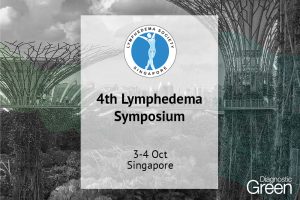Intraoperative assessment of mastectomy flaps and nipple-areola complex (NAC) with indocyanine green angiography (ICGA) for decision-making in delayed breast reconstruction after nipple-sparing mastectomy (NSM) remains to be fully elucidated. We evaluated patterns of ischaemia and reperfusion in NSM with delayed breast reconstruction, and their outcomes.
Single-institution retrospective study of delayed implant-based breast reconstructions following NSM due to poor perfusion analysis on ICGA. Intraoperative ICGA perfusion values and fluorescence patterns during the delayed and subsequent reconstruction operations were analysed. Fifty-six (45 patients) delayed breast reconstructions following NSM were performed. Median time to reconstruction was seven days (range, 4-21 days). A total of 112 fluorescence images were reviewed. Four patterns of ischaemia were identified during initial mastectomy (Type I, diffuse ischaemia; Type II, geographic ischaemia; Type III, incisional ischaemia; Type IV, NAC only ischaemia). All, but 1 breast, had adequate reperfusion during delayed reconstruction. Obesity (BMI ≥ 30) was associated with Type I ischaemia (p <.001). Mean ICGA absolute and relative perfusion values during initial mastectomy were significantly lower than the perfusion values during delayed reconstruction (absolute value 6.7 versus 40.2 units, p <.001; relative value 10% versus 44%, p <.001, respectively).
Delaying breast reconstruction for NSM with ischaemia predicted by ICGA may allow blood supply to the flap and NAC to improve, reducing risk for necrosis. Distinct patterns of ischaemia and low perfusion values with ICGA may be used in the decision to delay reconstruction.
https://www.jprasurg.com/article/S1748-6815(22)00436-3/fulltext




